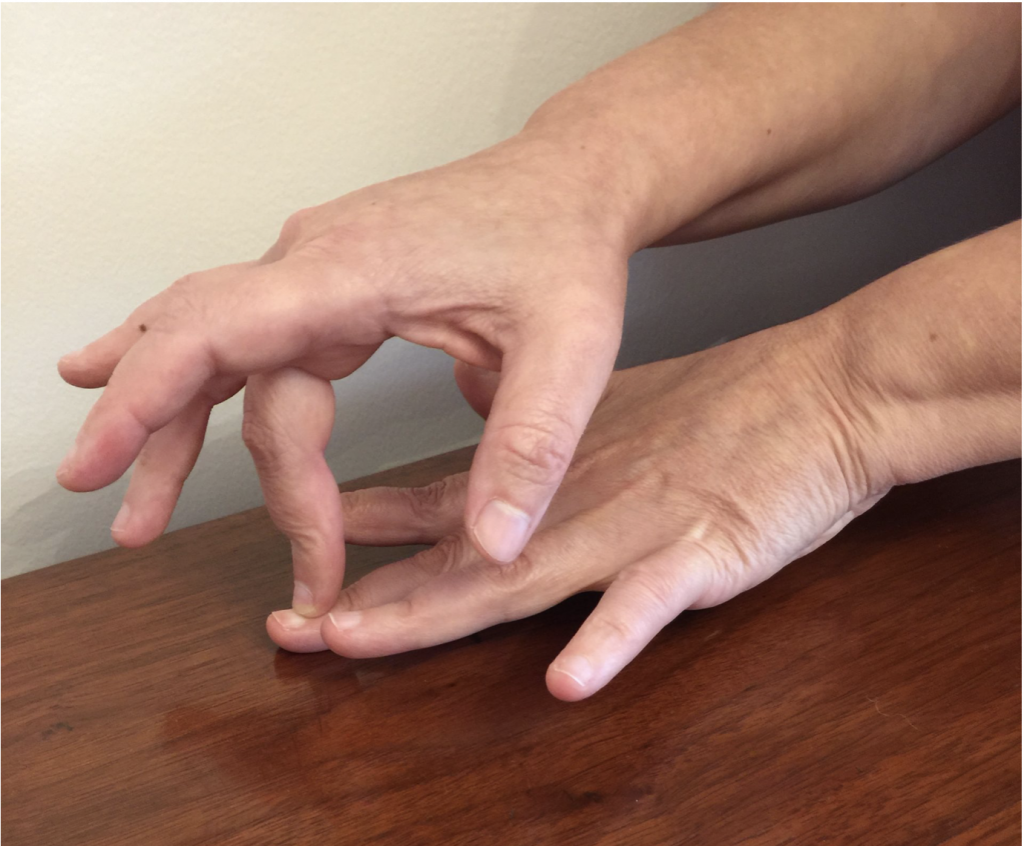Chapter 14 – Gastrointestinal System Assessment
Abdomen – Percussion
Percussion of the abdomen involves tapping the body to elicit sounds and determining whether the sounds are appropriate for the underlying structure of the quadrant. This provides information about the overall consistency of the abdomen as well as the size and borders of some of the underlying structures. For example, percussion sounds of the abdomen can tell you whether the underlying structures are:
- Fluid filled with a mixture of air and contents (e.g., intestines, bladder, stomach).
- Fluid results in a tympanic sound (like a drum, usually high pitched with a long duration). General tympany with scattered dullness is the dominant sound heard over the abdomen because of the intestines.
- Dense (e.g., liver, an abnormal mass close to the surface, intestines filled with stool).
- Density results in a dull sound (like a quiet thud, usually high pitched with a short duration).
Clinical Tip
Percussing the abdomen involves the following steps:
1. Use an indirect percussion technique to percuss the abdomen. As shown in Figure 7, this technique involves the application of a mediated force using parts of both hands.

Figure 7: Indirect percussion.
2. Perform indirect percussion using a zig-zag pattern (see Figure 8) beginning in the right lower quadrant and progressing clockwise. Percuss about three times per quadrant. For indirect percussion (see Video 5):
- Non-dominant hand: With your hand parallel to the client’s body, place the distal interphalangeal joint of the pleximeter (middle) finger of your non-dominant hand firmly on the body region to percuss. Because the abdomen is often soft, you must push down relatively firmly with the distal interphalangeal joint. Ensure that only your interphalangeal joint is touching the body (and not the rest of the hand) and that the finger is fully extended.
- Dominant hand: Flex (bend) the pleximeter finger of your dominant hand and with the tip of your finger, tap twice on the distal interphalangeal joint of your non dominant hand. The pleximeter finger of your dominant hand should be at a 90-degree angle to the surface of the client’s body. The motion should be firm and quick with a very short duration. To optimize this motion, the wrist of your non-dominant hand should be relaxed and loose with your forearm parallel to the client’s body.

Figure 8: Pattern to percuss the abdomen.
3. Listen to the quality of the sound and identify the location.
4. Note the findings.
- Normal findings might be documented as: “General tympany with scattered dullness heard in all quadrants. Dullness heard in upper right quadrant over the liver.”
- Abnormal findings might be documented as: “Dullness heard in left lower quadrant with general tympany and scattered dullness in all other quadrants.”
Video 5: Percussing the abdomen.
Activity: Check Your Understanding
involves the accumulation of fluid in the peritoneal cavity.

